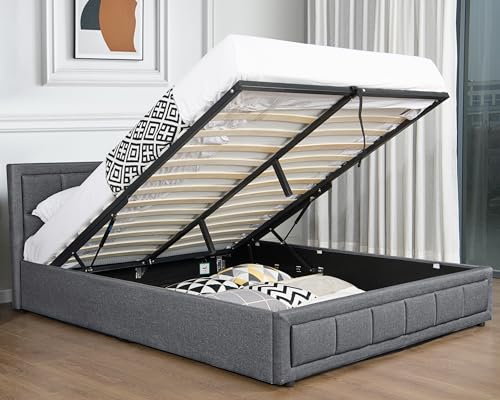Best Bed for Back Pain: A Guide to Finding the right Mattress
Back pain is a problem that affects millions of people worldwide and can greatly impact quality of life. One area that can make a big difference is your bed. A good mattress can provide the necessary support and comfort to alleviate back pain and help you get a good night’s sleep. But with so many options available, how do you know what is the best bed for back pain? Let’s explore some factors to consider when choosing a mattress.
Firmness Level: Finding the Right Balance
When it comes to back pain, the firmness level of your mattress plays a crucial role. Traditionally, people believed that a firm mattress is best for back pain. However, recent research suggests that the concept of a universally “firm” or “soft” mattress may not be accurate for everyone.
The optimal firmness level for your bed depends on factors such as your weight, sleeping position, and personal preference. Generally, a medium-firm mattress is recommended for back pain as it provides enough support while also contouring to your body’s natural curves. However, it’s essential to choose a mattress that feels comfortable to you and doesn’t cause any additional discomfort.
Material Matters: Memory Foam, Latex, and Innerspring
The material used in a mattress can significantly affect its ability to alleviate back pain. Here’s a closer look at some popular mattress materials:
Memory Foam: Memory foam mattresses are known for their ability to conform to the shape of your body, providing customized support and relieving pressure points. This can be beneficial for back pain by promoting proper spinal alignment. Additionally, memory foam mattresses absorb movement, making them ideal for couples.
Latex: Latex mattresses are known for their responsiveness and bounce. They offer good support and can help alleviate back pain by providing proper spinal alignment. Latex is also a natural and eco-friendly material, making it an excellent choice for those who prefer organic options.
Innerspring: Innerspring mattresses are the traditional ones, consisting of coils or springs. They provide good support and breathability. However, they may not contour to your body as well as memory foam or latex mattresses. For those with back pain, look for pocketed coil or hybrid mattresses that combine springs with foam or latex for added support and comfort.
Personal Factors to Consider: Weight, Sleeping Position, and Health Conditions
In addition to the firmness level and material, several personal factors can influence your choice of the best mattress for back pain. Here are three key factors to consider:
Weight: Your weight can determine the level of support you need from a mattress. Lightweight individuals may find softer mattresses more comfortable, while heavier individuals may require a firmer mattress to prevent sinking too much.
Sleeping Position: Your sleeping position can also impact the type of mattress that works best for you. Back sleepers typically need a mattress that supports the natural curve of the spine, while side sleepers may benefit from a softer mattress to relieve pressure points. Stomach sleepers generally require a firmer mattress to maintain proper spinal alignment.
Health Conditions: If you have specific health conditions, such as arthritis or a herniated disc, you may need to consult with a healthcare professional for personalized advice on the best bed for back pain.
Additional Considerations: Motion Isolation and Temperature Regulation
When selecting a mattress, you may want to consider additional factors that contribute to overall comfort and sleep quality:
Motion Isolation: If you share your bed with a partner, motion isolation can be an important aspect to consider. Memory foam and latex mattresses are known for their ability to absorb motion, preventing disturbances when one person moves or gets out of bed.
Temperature Regulation: Some mattresses retain heat and can make you sleep hot, which can be uncomfortable for individuals with back pain. Look for mattresses with cooling properties, such as breathable covers or gel-infused memory foam, to ensure a comfortable sleep temperature.
Ultimately, finding the best bed for back pain is a personal journey that may require some trial and error. It’s essential to prioritize your comfort and support needs when selecting a mattress. Consider the firmness level, material, and personal factors mentioned above to make an informed decision for a restful and pain-free sleep.






